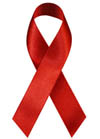 “The University of the Free State (UFS) remains concerned about the threat of HIV/AIDS and will not become complacent in its efforts to combat HIV/AIDS by preventing new infections”, states Ms Estelle Heideman, Manager of the Kovsies HIV/AIDS Centre at the UFS.
“The University of the Free State (UFS) remains concerned about the threat of HIV/AIDS and will not become complacent in its efforts to combat HIV/AIDS by preventing new infections”, states Ms Estelle Heideman, Manager of the Kovsies HIV/AIDS Centre at the UFS.
She was responding to the results of a study that was done at Higher Education Institutions (HEIs) in 2008. The survey was initiated by Higher Education AIDS (HEAIDS) to establish the knowledge, attitudes, behaviours and practices (KABP) related to HIV and AIDS and to measure the HIV prevalence levels among staff and students. The primary aim of this research was to develop estimates for the sector.
The study populations consisted of students and employees from 21 HEIs in South Africa where contact teaching occurs. For the purpose of the cross-sectional study an ‘anonymous HIV survey with informed consent’ was used. The study comprised an HIV prevalence study, KABP survey, a qualitative study, and a risk assessment.
Each HEI was stratified by campus and faculty, whereupon clusters of students and staff were randomly selected. Self-administered questionnaires were used to obtain demographic, socio-economic and behavioural data. The HIV status of participants was determined by laboratory testing of dry blood spots obtained by finger pricks. The qualitative study consisted of focus group discussions and key informant interviews at each HEI.
Ethical approval was provided by the UFS Ethics Committee. Participation in all research was voluntary and written informed consent was obtained from all participants. Fieldwork for the study was conducted between September 2008 and February 2009.
A total of 1 004 people participated at the UFS, including the Main and the Qwaqwa campuses, comprising 659 students, 85 academic staff and 256 administration/service staff. The overall response rate was 75,6%.
The main findings of the study were:
HIV prevalence among students was 3,5%, 0% among academics, 1,3% among administrative staff, and 12,4% among service staff. “This might not be a true reflection of the actual prevalence of HIV at the UFS, as the sample was relatively small,” said Heideman. However, she went on to say that if we really want to show our commitment towards fighting this disease at our institution a number of problem areas should be addressed:
- Around half of all students under the age of 20 have had sex before and this increased to almost three-quarters of students older than 20.
- The majority of staff and a third of students had ever been tested for HIV.
- More than 50% of students drink more than once per week and 44% of students reported being drunk in the past month. Qualitative data suggests that binge drinking over weekends and at campus ‘bashes’ is an area of concern.
Recommendations of the study:
- Emphasis should be on increased knowledge of sexual risk behaviours, in particular those involving a high turnover of sexual partners and multiple sexual partnerships. Among students, emphasis should further be placed on staying HIV negative throughout university study.
- The distribution of condoms on all campuses should be expanded, systematised and monitored. If resistance is encountered, attempts should be made to engage and educate dissenting institutional members about the importance of condom use in HIV prevention.
- The relationship between alcohol misuse and pregnancy, sexually transmitted infections (STIs), HIV and AIDS needs to be made known, and there should be a drive to curb high levels of student drinking, promote non-alcohol oriented forms of recreation, and improve regulation of alcohol consumption at university-sponsored “bashes”.
- There is need to reach out to students and staff who have undergone HIV testing and who know their HIV status, but do not access or benefit from support services. Because many HIV-positive students and staff are not receiving any kind of support, resources should be directed towards the development of HIV care services, including support groups.
Says Heideman, “If we really want to prove that we are serious about an HIV/AIDS-free campus, these results are a good starting point. It definitely provides us with a strong basis from which to work.” Since the study was done in 2008 the UFS has committed itself to a more comprehensive response to HIV/AIDS. The current proposed ‘HIV/AIDS Institutional response and strategic plan’, builds and expands on work that has been done before, the lessons learned from previous interventions, and a thorough study of good practices at other universities.
Media Release
Issued by: Mangaliso Radebe
Assistant Director: Media Liaison
Tel: 051 401 2828
Cell: 078 460 3320
E-mail: radebemt@ufs.ac.za
10 May 2010